In Her Own Words: How One Woman Bravely Battled Cancer And Managed To Keep Her Hair
This is how one cancer survivor was able to keep her hair while battling breast cancer. Below, she explains how while sharing her journey to cancer-free!
My name is Mara. I am a cancer survivor that was able to keep my hair throughout the chemo process, and this is my story.
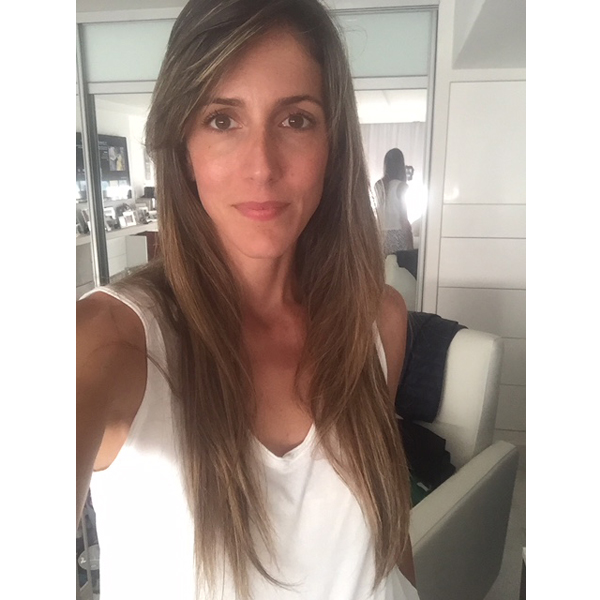
Before Cancer
Born and raised in Puerto Rico, cancer was in our life like it is for most people—we knew people that survived it, we had older family members that have died from it but it was not something present in our day-to day-lives. It was a word, a disease, one we knew about but didn’t want to know too well.
I had a mammogram and sonogram done in March 2016, right after I had stopped breastfeeding my second son. Both results came back negative. I was very active physically—boxing 3 to 4 times a week and doing yoga when possible. Otherwise, I was running a business co-founded with my father and took care of my husband and our two sons, 3- and 1½-years-old at the time. I was in the best shape of my life, and coincidentally, my hair was the longest it had ever been.

Diagnosis
Then June 23, 2016, began the typical “I found a lump while in the shower” chapter. I never learned how to do a self-exam so I was not looking for it. I just happened to feel a bump while putting soap on. I thought it was a muscle spasm from boxing. Having breastfed both of my sons for a year and losing some weight in the months prior, I was barely an A cup at the time. That probably helped me notice the 6 cm tumor that was underneath my skin—just shy of the chest wall and very close to the lymph nodes. I would come to undergo additional sonograms, mammograms, an MRI and biopsies that confirmed I had a HER2+, invasive ductal carcinoma on my left breast. I had breast cancer at 36.
Thinking back to the day I was diagnosed, a Tuesday afternoon in July, it feels like ages ago. Yet, on the moments I allow myself to do so, I can close my eyes and go back there—sitting across the doctor’s desk, my husband and parents next to me as the radiologist utters the words that you only expect to hear on TV, “There is no easy way to say this…you have cancer.”
Immediately time stood still. I was frozen in shock. Then, I was flooded with disbelief, sorrow, heartache for my kids, my family and the gut-wrenching sensation that for the first time in our very privileged lives, the magnitude of our emotions actually did amount to the circumstance. I don’t go there often, but I suspect it is a moment that will be with me forever.
Treatment
Ten days later, after multiple doctor visits and a flurry of tests, I was in New York City for a second opinion. Six rounds of neoadjuvant TCHP (Taxotere, Carboplatin, Herceptin, Perjeta), 1 year of targeted therapy, surgery and possible radiation was the initial recommendation. I was sitting at the oncologist’s office at 5pm on a Thursday and after running through my very organized list of questions for her, I asked, “What is the timing for this?” and the answer was, “I would start as soon as possible.”
My dad had been motionless the whole appointment. At that moment he turned, looked at me and whispered, “Empiezas mañana,” which in Spanish means “you start tomorrow.” We asked for the soonest availability since we were from out of town, and the doctor was kind enough to secure a chair for chemo to begin treatment the very next morning.
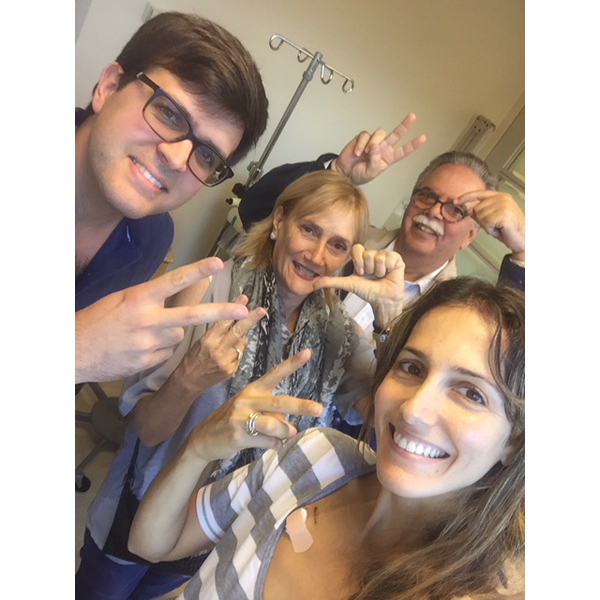
Cold Cap Therapy
Upon discussing treatment, the doctor asked me if I wanted to use Cold Caps. I had no clue what she was talking about. She explained that I could potentially save my hair by using these “cold hats” to avoid having the chemotherapy drugs reach the hair follicle at the time chemo was the strongest, which was when it was administered. She said your scalp is cooled with the cap prior to chemotherapy being administered, and you have to stay a few hours post treatment to maintain the low temperature of the scalp, caps are changed every 20 minutes, etc…but to be honest, this was way more information than I could absorb at the moment. I hadn’t even processed the fact that I was starting chemo the next morning and here they were talking about keeping my hair and changing caps. It was a lot.
My initial reaction was to reject it—“Forget the hair! Get the cancer!” It sounded like so much work within a process I wasn’t even ready for. But the doctor took one look at my long hair, then looked at her assistant and said to her, “Let’s try to get her the cold caps.” And for that I will be forever grateful, not only because of the positive impact that having hair had on my whole cancer experience, but also because she knew what the next few years were going to be like for me and my family. She cared enough to go beyond the medicine and arrange for this option to be available to me on such short notice, which was no small endeavor.

Before leaving the appointment, they had me walk back to the treatment area to talk to a patient who had just started chemo that day so that I could see what the caps looked like and know what to expect the next morning. That’s when I saw that someone else did the capping for you, which was a huge relief. Meeting that patient and knowing that in a matter of hours it would be me in the chair made it all tangible and real. I gave her a quick summary of the 2 weeks that had led to my being there, and we both cried together. Surely enough, we became chemo buddies and went on to coordinate most of our sessions together and even celebrated the day of our last chemotherapy by removing the names from the cold cap containers reserved for us.
As a person who was truly ready to lose her hair, I can attest to how big of a game changer keeping most of my hair has been. During the strangest, hardest and most volatile year and a half of our lives, these silver linings were priceless:
- My kids saw the mommy they knew (albeit skinnier, paler and with a port but also calmer and more present).
- I could go out and not be treated like I was sick.
- More importantly, I didn’t feel like a cancer patient. I looked in the mirror and saw myself going through a process that would ultimately end on a positive note.
I joke that the hardest part of my cancer process was following all the rules to keep my hair:
- You are not supposed to touch it very often, if at all.
- You can’t brush it without holding it at the root and even then, it has to be with a wide-tooth comb.
- You can’t wash it 3 days before or 3 days after chemo.
- You shouldn’t “wash” it more than once a week.
- When you do wash it (if you can call it that), you can’t put your head directly under the shower head. You dilute a drop of a particular shampoo in a bowl of cold water and you pour that over your head (fun when it’s cold outside). Then, you pour a bowl of clean, cold water to rinse the shampoo that was in the hair and that’s it—you washed it.
- When it itches, don’t scratch it.
- As for styling, don’t touch it.
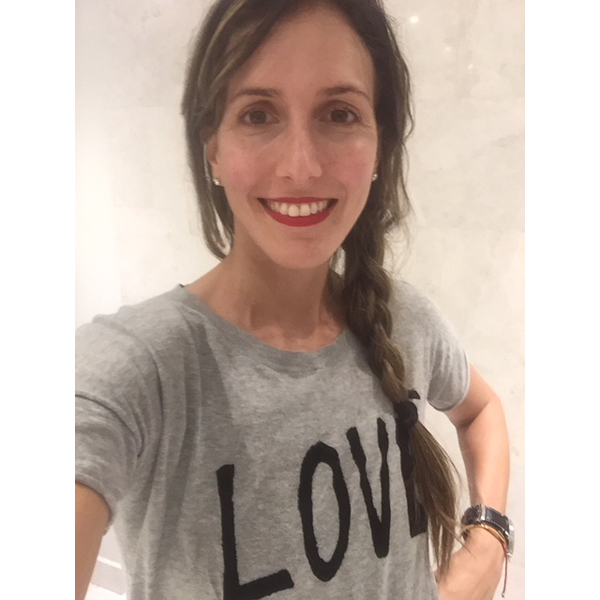

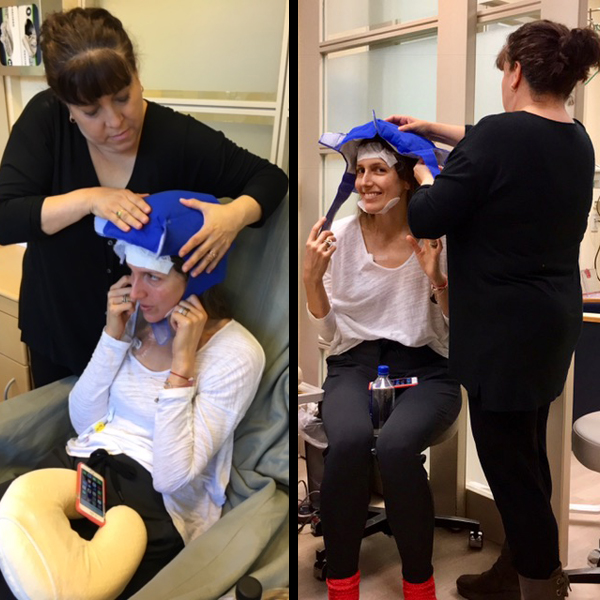
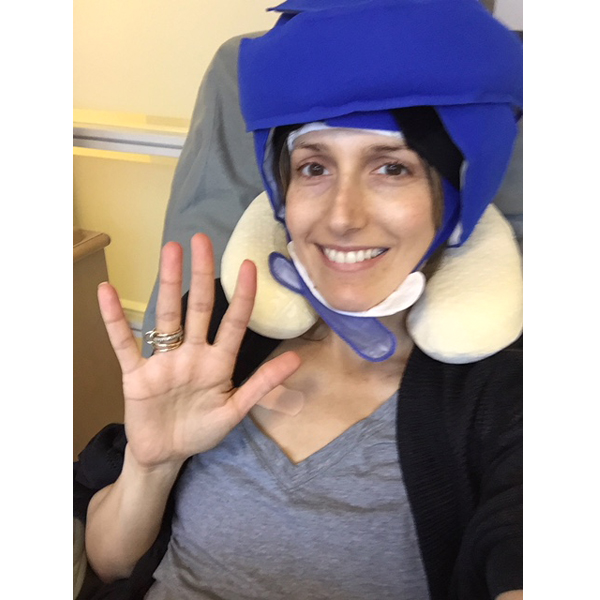
Four months of bad chemo, a port, a year of targeted therapy, a double mastectomy, 5 weeks of daily radiation and a final implant surgery later—I am on the other side of this!

If you or someone you know has been faced with cancer and/or the tough decision of chemotherapy, or you would like more information as to how you could get involved in spreading awareness within your community, please email The Rapunzel Project at info@rapunzelproject.org for a wealth of knowledge and insight into local opportunities and possible options that may change the way you or a loved one looks at the chemotherapy process. Until there is an all out cure, The Rapunzel Project will continue its efforts to help make a beautiful difference in people’s lives.







